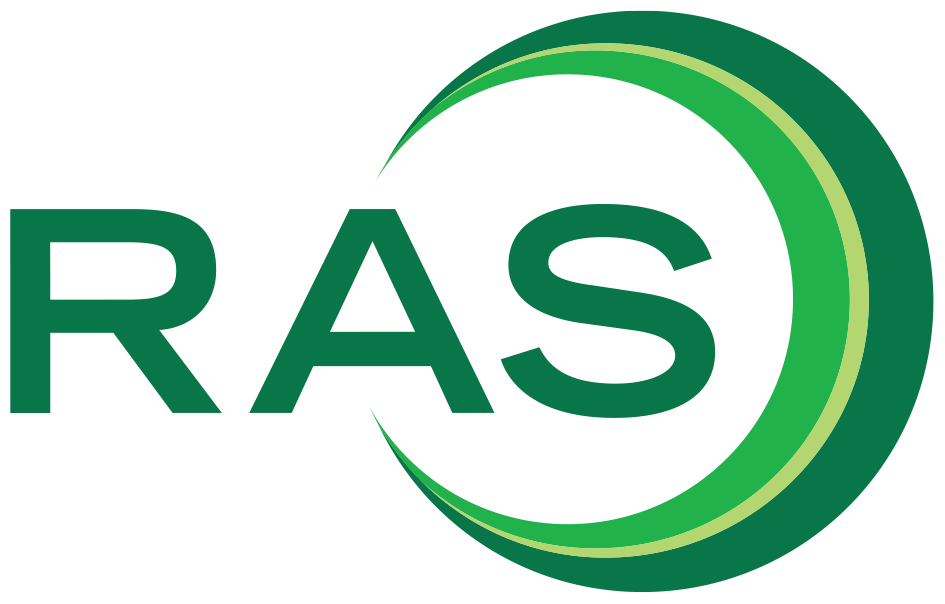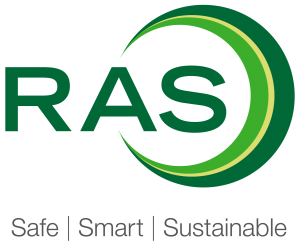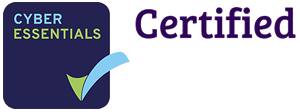Leadership
The ISC believes that “Leadership in fundamental research, knowledge and competence in process safety is essential. Senior leaders in an organisation must set the expectations and demonstrate their commitment in everyday actions. Process safety leadership underpins inherently safer engineering and design and robustly engineered safety systems. It supports and upholds the continued evolution of systems and procedures for maintaining safer process operations. These are sustained by best practice in the assurance of process safety in a changing environment, taking full account of the contributions of human factors, behaviours and external influences. This shapes the prevailing culture in the workplace and in society at large to build a common understanding of risk issues. It also develops and utilises new ways for cost-effective and sustainable risk reduction in the process industries.”
By conducting a leadership assessment RAS can provide you with confidence that the mix and skills of your senior leadership team is appropriate for the day to day running and future of your business. Carolyn Nicholls, our Managing Director, and Andy Stanley, our founding partner, both have significant experience in working with senior leaders and have developed and supported the delivery of a number of leadership improvement programmes over the years. They have also successfully supported several leadership teams in preparation for a Leadership Intervention by the COMAH Competent Authority.
Preparation involves drawing on your company’s values together with other external industry standards such as the Process Safety Leadership (PSLG) eight principles of major hazards leadership (used by the COMAH Competent Authority in their Delivery Guide and Intervention Tool), the Energy Institute Process Safety Management System Framework of twenty elements, and, if needed, other leadership models such as The Organisation for Economic Co-operation and Development (OECD), and the European Safety Centre.
During the assessment, structured face to face interviews are carried out with your senior leadership team. This would include your Chief Executive Officer, Commercial Director, Head of SHEQ, Head of Finance, Head of HR, Head of Engineering and Head of Operations. Verification of information/conclusions drawn from the interviews would then take place using available evidence from PSPIs, audit findings, Competent Authority interventions etc.
A leadership assessment report is then created with the aim of developing and delivering a leadership improvement programme which would include training and coaching tailored to the needs of the leadership team.
Knowledge and competence
Put simply, knowledge is what you know. Competence is the ability to do something well; it’s a combination of accuracy, possession of required skills, knowledge, qualification, or capacity to do something.
Everything we do is about managing risk whether it be in the context of safety to people, business, or environment. We are proud of the fact that we have two MIChemE Professional Process Safety Engineers, a Fellow of the Safety and Reliability Society, and three Functional Safety Engineers in our line-up. All of them are experts in their field.
Every single person in our team has the knowledge, experience, competence, and drive to help you achieve good process safety outcomes, whether that be through delivery of process safety awareness sessions, developing bespoke process safety advice, walking you through hazard identification studies, carrying out risk assessments, creating operator manuals, achieving regulatory compliance, or hitting your COMAH submission deadlines with the Competent Authority.
Process Safety Competence isn’t just for the consultants and process engineers. Process safety competence is something that should be seen throughout all roles of your business. We can help you take a challenging look at your organisation’s process safety competence and assist in the development of a robust and practical process safety competence management system. We can even offer training courses which can be tailored to the requirements of your business and your people.
There’s not much we can’t help you with.
Engineering and Design
At the stage of conceptual design, the level of inherent safety and operability is established.
We can support you at the outset of your journey with, for example, the Front End Engineering Design (FEED) stage of new projects, by advising you on compliance requirements, issuing COMAH Notifications, and developing the Pre-Construction Safety Report (PCSR) necessary for getting the green light for new establishments or new facilities on existing establishments.
We can also support you as you move forward by assisting with key COMAH related activities at the detailed design phase, from preparation of your Pre-Operations Safety Report (POSR) to your Operational Safety Report (OSR).
When you are fully operational and need to undertake modifications to your procedures, plant and equipment, people, or substances, we can help you with formal management of change. Put simply, we can help you make sure that changes don’t take place without having undertaken a thorough safety, engineering and technical review that considers your process conditions, operating and engineering methods, safety, environmental conditions, engineering hardware and design.
Systems and Procedures
A safety management system is a systematic and proactive approach to managing safety risks and can cover a wide range of considerations. Effective leadership and safety management are crucial for continued business operation and growth, and an effective safety management system is one of the mechanisms by which safety performance can be continuously improved.
We don’t use a ‘one-size-fits-all’ methodology when we are asked for advice as we understand that every business has different needs and requirements. Our years of experience, particularly in working with both Upper and Lower Tier COMAH establishments, means that we can provide you with invaluable support in this area whether that be in helping you develop or perhaps evolve your own unique system and procedures.
We are well versed in the Energy Institute process safety management elements and can use this to help you benchmark your own systems against the wider industry, helping you to identify opportunities for improvement.
Assurance
Assurance processes are, obviously, needed to monitor process safety performance. But what if you don’t know where to start?
Performance monitoring is a key element of any management system and the general term ‘Key Performance Indictors’ or KPIs is well known. Process Safety Performance Indicators (PSPIs) are a specialised subset of the more general KPIs and are designed to measure how well an organisation manages the risks of major accidents and incidents in its operations.
When thinking about chemical and major hazard industries, these should follow six important steps:
- Establish the organisational arrangements to implement indicators
- Decide on the scope of the indicators
- Identify the risk control systems and decide on the outcomes
- Identify critical elements of each risk control system
- Establish data collection and a reporting system
- Review
Having good PSPIs is important, but without good data analysis, the opportunities to improve are limited. When it comes to data collection, specialist software packages can be costly. However, using proprietary spreadsheet software is a cost-effective option that allows for a bespoke system to be developed and we are accustomed to supporting companies in developing tailored spreadsheets for data collection with dashboards that can analyse and illustrate performance to all levels of the organisation. This can then be reviewed over longer periods of time to identify trends and drive continuous improvement.
We have a wealth of experience in defining programmes that you can use for the systematic monitoring and evaluation of your business, including the development of metrics, verification, and audit. We can help you track how a process is performing, measure the effectiveness of a specific system, or deliver a structured, competent, and independent programme of investigation on your process safety management system in its entirety.
Understanding the data and making the right decisions is vital and we are here to help you.
Human Factors
The HSE definition is: “Human factors refer to environmental, organisational and job factors, and human and individual characteristics which influence behaviour at work in a way which can affect health and safety.”
A critical element of any safety management system is consideration of human factors. In simple terms, this means that you need to think about the person, the job, the organisation and how they impact on people’s health and safety related behaviour.
We have no doubt that managing human factors is key to preventing major accidents and occupational ill-health and can also be highly beneficial in terms of improving system performance and business productivity. Our guidance can help you address the gamut of issues by thinking about them during risk assessments, when analysing incidents, accidents and near misses, in certain aspects of day-to-day health and safety management and, perhaps most importantly, in design and procurement.
The ideal way to optimise a system is to integrate human factors into the earliest stages of the design process. By considering human factors early on, we can help you assure that your design will be built upon solid foundations that ensure that human performance is optimised. This not only boosts your people’s well-being but will also lead to improved overall system performance.
When thinking about day-to-day health and safety management, we can help you consider Performance Influencing Factors (PIFs). These are the features of the job, the person, and the company that influence human performance. With our wealth of experience in this field, we can support you in identifying the PIFs for a particular task, e.g., the complexity of the task, manning levels, fatigue, and provide guidance on how adjust them to minimise the potential for human failure. This is particularly important for safety critical tasks which are crucial to the management of major accident hazards, and which may lead to or fail to prevent a major accident if not considered sufficiently.
Our services in this field include:
- Safety Critical Task Analysis
- Quantification of human error for use in QRA
- Human Factors Integration Plans
- Alarm Rationalisation using EEMUA191
- Control room design compliance reviews against EEMUA20
Culture
Process safety culture has been defined as, “The combination of group values and behaviours that determine the manner in which process safety is managed.”
A sound process safety culture provides people with the understanding that it is critical to adhere policies and procedures which are the backbone of any safety management system. It sets out a company’s commitments and provides a benchmark for achievement. Policies are endorsed by senior management who must sign them to demonstrate their commitment to achieving their promises when implementing systems for better health and safety, environment management and major accident prevention. This all leads to ensuring process safety becomes normal practice and develops an appetite for continuous improvement rather than it being viewed as a tick box exercise.
Ultimately, it comes down to communication and engagement and we can help you improve this by delivering facilitated leadership training. By sharing our cross-sector learnings, we can work with you to promote a positive safety culture in your business and provide your people with the tools they need to be the best leaders possible. We can encourage those on the ground to take part in risk assessments and surveys both of which demonstrate that you are committed to safety and wish to empower the members of your team.
Let’s face it, asking those with unique experience and knowledge in a process to get involved in your process safety management and, ultimately, the principles underpinning your policies has a mutual benefit; you gain a more representative picture of what goes on on the ground and where you should focus resources, and your people have the opportunity to experience first-hand what the arrangements for safety management are.



